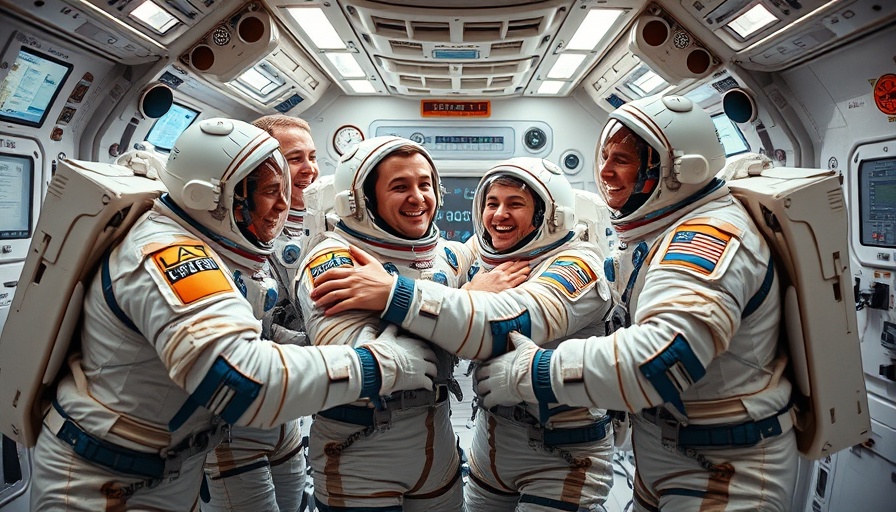
NASA's Astronauts Welcome Their Replacements: A Moment of Connection in Space
On March 16, 2025, NASA's two astronauts, Butch Wilmore and Suni Williams, welcomed their replacements aboard the International Space Station (ISS) after an unexpectedly long mission. Originally scheduled for a brief stay, these astronauts found themselves in a prolonged assignment lasting nearly nine months. Their replacements, four new crew members—including representatives from the U.S., Japan, and Russia—arrived via a SpaceX capsule, marking a pivotal moment in this ongoing phase of human space exploration.
Unforeseen Challenges of Extended Missions
Wilmore and Williams, who launched last June aboard Boeing’s Starliner for a test flight, faced a series of unprecedented challenges. Technical glitches plagued their capsule, resulting in delays that would extend their mission beyond what anyone anticipated. The Starliner encountered issues with propulsion systems and had to return without them, which was critical in adjusting the launch schedules and ensuring safe returns for all astronauts.
The Importance of Team Dynamics in Space
The recent handover in space underscores the vital nature of teamwork and collaboration. The two outgoing astronauts devoted time to familiarize the newcomers with the complexities of the ISS, effectively illustrating the necessity of experience transfer in high-stakes environments. "It was a wonderful day. Great to see our friends arrive," said Williams, highlighting the emotional connections forged even in the confines of space.
The Broader Implications for Future Missions
This transition has far-reaching implications for NASA’s future missions and the growing partnership with private companies like SpaceX. As NASA continues to push the boundaries of space exploration, the arrival of the Crew 10 team exemplifies the dynamic nature of space travel, where flexibility and quick adjustments are paramount. The successful docking and the following crew changeover serve as a testament to the progress in human spaceflight capabilities and international collaboration.
The Future of Space Exploration: What Lies Ahead?
NASA and SpaceX have set a remarkable precedent for future exploration missions. With the new crew scheduled to partake in various experiments and studies, the progress in technology and the finer points of astronaut training will remain essential as humanity ventures deeper into space. As these astronauts embrace their roles aboard the ISS, the lessons learned from Crew 9’s prolonged stay will surely enhance the operational strategies for upcoming space missions.
As the new team settles into their routines, excitement builds for the forthcoming collaborations, experiments, and discoveries that lie ahead. Their journey reflects a pivotal shift in how we approach space exploration, balancing challenges and opportunities in exploration beyond our planet.
This situation serves not only as a reminder of human innovation but also resurrects discussions regarding space policies, technology preparedness, and the global effort surrounding exploration. As we look to the future, the importance of seamless transitions and teamwork remains paramount in this new age of space exploration.
 Add Row
Add Row  Add
Add 




Write A Comment